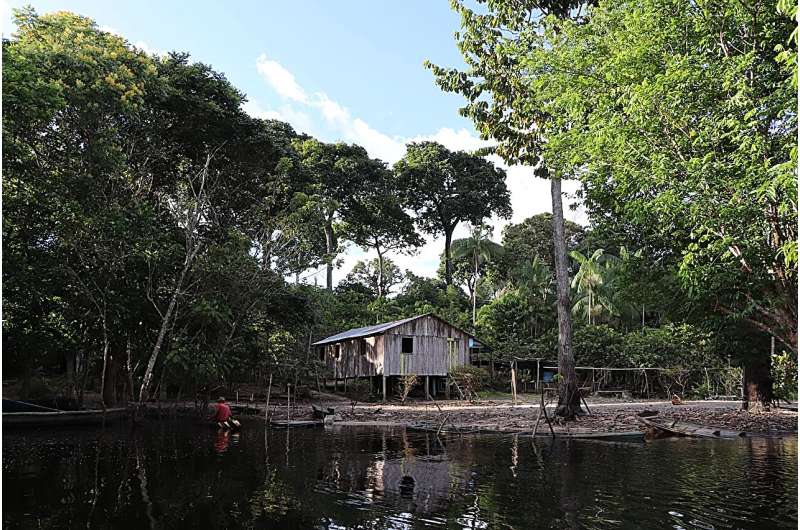This article has been reviewed according to Science X's editorial process and policies. Editors have highlighted the following attributes while ensuring the content's credibility:
fact-checked
trusted source
proofread
Exploring the roots of the Anthropocene

Understanding how tropical land use and deforestation affects the dynamics of the global Earth system and identifying potential tipping points are key to the future of our species on this planet. By exploring the long history of human societies in tropical forests and bringing together natural and social systems in interdisciplinary models, we can evaluate the repercussions of early human interaction with tropical environments. This historical interaction has left irreversible imprints on the Earth, with consequences that will reverberate far beyond the 21st century.
Human activity has so profoundly transformed the Earth that debates have arisen regarding the potential onset of a new geological epoch: the Anthropocene. While the exact beginning of this "human age" has not yet been conclusively determined, it is hard to deny that the impacts of human activities on the Earth's natural systems are rapidly increasing. There is a risk that critical tipping points will soon be reached, such as the potential loss of the Amazon rainforest—which, in the worst-case scenario, could lead to irreversible alterations in the Earth's ecosystems.
The Anthropocene concept can also be described as the emergence of a new functional part of the Earth's vast metabolic system: the so-called technosphere. In terms of its physical composition, it encompasses all artifacts, building, land-use patterns and energy systems of human origin, which alone weigh an estimated 30 trillion tonnes. The historical appearance and expansion of the technosphere is complex and has taken place over a long period of time.
Although the rate of human impact on the planet has surged since the mid-20th century due to industrialization and rapid technological advancement, the social, economic, technological, and environmental origins of the Anthropocene extend much further into the past. From the dawn of agriculture to the invasion of the Americas by Europeans and the global exchange of goods that followed—early societies laid the groundwork for the profound upheaval that the Earth system is currently experiencing.
Taking a look at the tropics
Tropical forests serve as a particularly crucial example in this context. Given the ecological importance of the tropics and their projected rise in population and urban expansion, it is becoming increasingly important to understand how technologies, socio-economic systems, land use, and the Earth system have interacted in these regions over time.
Recent archaeological, historical and palaeoecological research findings illustrate how past human land use—from slash-and-burn agriculture to urbanization—has affected plants, animals, soils, and even the climate. In an interdisciplinary project at the Max Planck Institute of Geoanthropology, researchers from different departments have investigated the impact of early human activities on the natural functioning of tropical forests and analyzed the tropical belt within the broader context of the global challenges posed by the Anthropocene.
Thresholds for tropical land use
The scientists have identified three key thresholds in human land use in tropical rainforests over the last 10,000 years. The first two mark the beginning of food production and the emergence of new forms of settlement. Many foods that we take for granted around the world today—such as maize, chicken, and chocolate—have their origins in the tropics. The spread of rice and water buffalo in tropical forests was often accompanied by heightened levels of deforestation, soil erosion, and greenhouse gas emissions.
It can also be assumed that the onset of urbanization in the tropics around 1,000 to 2,000 years ago, and their associated exchange networks and resource demands, introduced new pressures on these ecosystems. New information and technologies were brought into circulation and invasive species spread.
The third threshold refers to the expansion of European and, later, US colonialism and imperialism around the tropics. Whereas Europe and the Americas had previously been isolated from each other, the arrival of the Iberian colonial powers directly connected them and integrated them into a global system of economic exploitation.
As a result, wild and domesticated animal and plant species were traded and introduced on a large scale, permanently changing landscapes around the world. Moreover, the spread of disease and the slave trade and violence practiced by the colonial powers had a drastic impact on the Indigenous population and their land use.
It is possible that feedback mechanisms of the Earth system were already permanently altered at this time. The marginalization of Indigenous land-use practices and the spread of the colonial system, based on land clearance for profit, as well as forced and slave labor, continued into the 20th century. The effects this had on global inequalities and tropical sustainability can still be felt today.
Provided by Max Planck Society





















